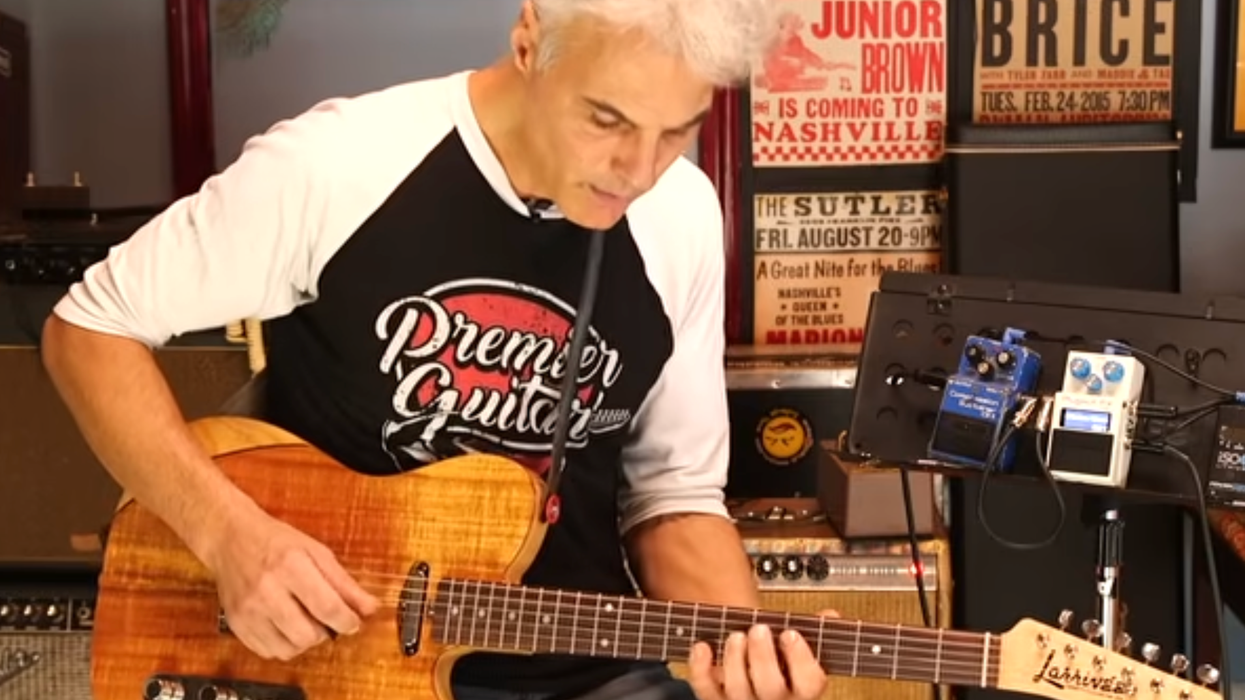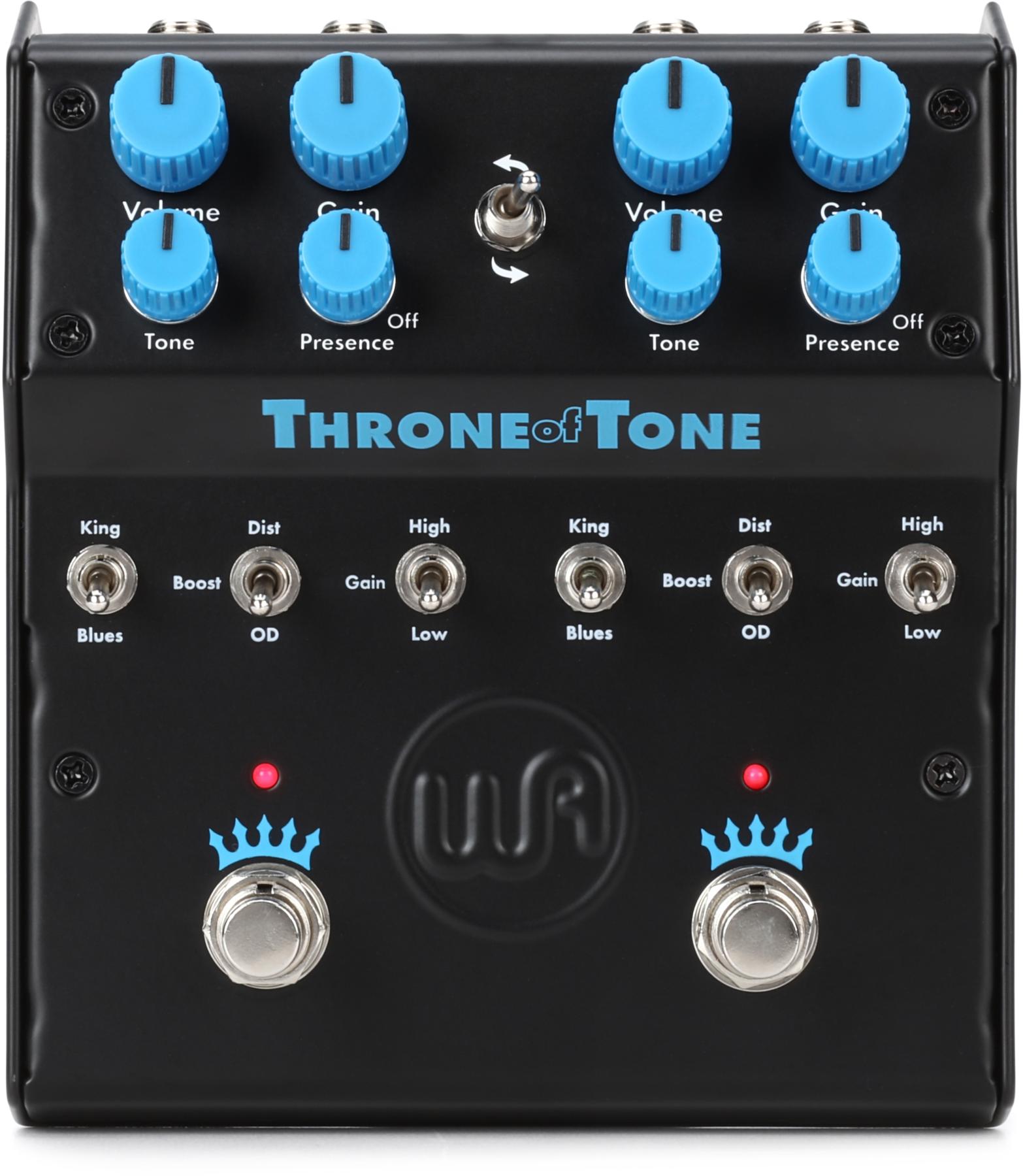RatingsPros:Great tones. Sharp looks. Smart, sensible departures from vintage specs. Cons: Neck joint could be tighter. Flat fretboard may not please purists. Street: $1,999 street (blonde hardshell case included) Fender Eric Johnson Signature Stratocaster Thinline | Tones: Playability: Build/Design: Value: |
Iconic Strat-wrangler Eric Johnson collaborated on a maple-fretboard signature model well over a decade ago, with a rosewood-fretboard model following a few years later. The Stratocaster Thinline marks Johnson’s biggest contribution to the Stratocaster family since then.
Give It an F!
The most attention-catching detail of Johnson’s new instrument is its upper-bout f-hole. The word “thinline” alludes to the late-’60s Telecaster Thinline, the semi-hollow, f-holed Tele that CBS-owned Fender introduced in 1969. Like that model, the Strat thinline is partially hollow, significantly reducing its weight relative to solidbody Strats.
Yeah, some purists will bitch about the f-hole, because Leo Fender never conceived such a Strat model. But hey—he didn’t create the Telecaster Thinline either. (The credit goes to German luthier Roger Rossmeisl, who also devised Fender’s less-successful Coronado, Montego, and LTD electrics, as well as the company’s acoustic line in the mid-to-late ’60s.) But novelty notwithstanding, there’s no objective reason why the design is any less attractive than an f-hole Tele.
Mellow Yellow
The Stratocaster Thinline is lovely from headstock to endpin. The immaculately applied “vintage white” body finish is a warm, soft yellow, offset by a white, ’50s-style, single-ply, 8-screw pickguard. The “aged white” knobs and pickup covers split the difference between the two shades, while the glossy yellowish cast of the neck’s old-school nitrocellulose finish completes the look. These colors don’t try to mimic an aged guitar—they’re just really pretty. The model also comes in two-tone sunburst.
This is an exceedingly comfortable guitar. Despite its lightness, the body balances perfectly. The neck has vintage-style mass and a relaxed V shape—a softer angle than, say, Fender’s Clapton signature models. As on Johnson’s previous signature Strats, the fretboard radius is 12"—substantially flatter than a vintage Stratocaster’s 7.25" radius or the 9.5" radius of today’s American Professional Stratocaster. In fact, this fretboard has the same radius as a Les Paul.
Flat and Fat
Despite the unusually flat fretboard, there’s still a Fender feel, at least to my hand. I love how the flatter radius lends a sharp, crisp edge to the unbound fretboard’s edges. This neck might feel odd to a guitarist who plays only vintage-spec Strats. But as a player who bounces constantly between varying scale lengths and neck radii, I instantly felt at home. Same with the beautifully installed medium jumbo frets. Vintage, they ain’t, but they sure feel good. I truly dig this neck.
Overall, the only construction issue I can spot is a slight gap in the upper neck pocket. (I was able to insert a thumbnail between the neck and body.) Still, the guitar lacks nothing in terms of sustain and zingy resonance.
Past, Meet Present
The tuners look and feel like vintage Fender Klusons, with one departure: The post heights are staggered—tall at the low E string and short at the high E. This increases the break angle at the nut for the highest strings, theoretically promoting resonance and sustain. There is no string tree.
There’s no vibrato cavity back plate either—not even screw holes. It’s a nice, clean look. The guitar shipped with all five trem screws installed, pulling the thoroughly traditional bridge tightly against the body and permitting down-pull only. (Of course, this can be modified.) The guitar arrived perfectly intonated. The action was high, though an Allen wrench adjustment can quickly change that.
The two tone controls regulate the neck and bridge pickups, as opposed to the neck and middle, as on vintage Strats. Most modern players will welcome this update. The bridge pickup is wound hotter than its vintage equivalent—another revision some modern players are likely to appreciate. And that brings us to the guitar’s splendid tones.
More of the Same
I’ve gotten to the point where I flinch at the mention of high-output Strat bridge pickups. Sure, the vintage design is sometimes thinner and spikier than you might desire. Still, the great Strat players always manage to get great tones from the traditional output. Since reviewing 5 vintage-style Strat replacement pickups in the November 2015 issue, I’ve even doubted whether hotter bridge pickups are desirable in the first place.
My two favorite sets did it the old-fashioned way: three pickups of roughly equal output installed in no particular order.
But this extra-output bridge pickup challenges my attitude. It occupies a sweet spot that avoids spikiness without sacrificing bite and definition. You might not even notice at first that it’s hotter than vintage—it’s simply less likely to venture into the icepick zone. All five pickup settings have an open, airy sparkle. There’s plenty of warmth from the neck pickup, but with welcome treble animation. And when you slather on the fuzz, the high-end clarity keeps tones punchy and articulate. The pickups have vintage-style staggered pole pieces.
The Verdict
Eric Johnson’s Signature Stratocaster Thinline honors the colors and quirks of Fender’s original 1954 vision, as filtered through the personal preferences of one iconic Strat player. The biggest departures from vintage specs (chambered body, flat fretboard, re-voiced pickups, and reassigned second tone control) might not suit purists, yet it’s easy to perceive their intent and advantages. In fact, some purists may feel a bit less pure—but very satisfied—after trying this attractive and super-playable guitar.
Watch the Review Demo:








![Rig Rundown: Russian Circles’ Mike Sullivan [2025]](https://www.premierguitar.com/media-library/youtube.jpg?id=62303631&width=1245&height=700&quality=70&coordinates=0%2C0%2C0%2C0)


























